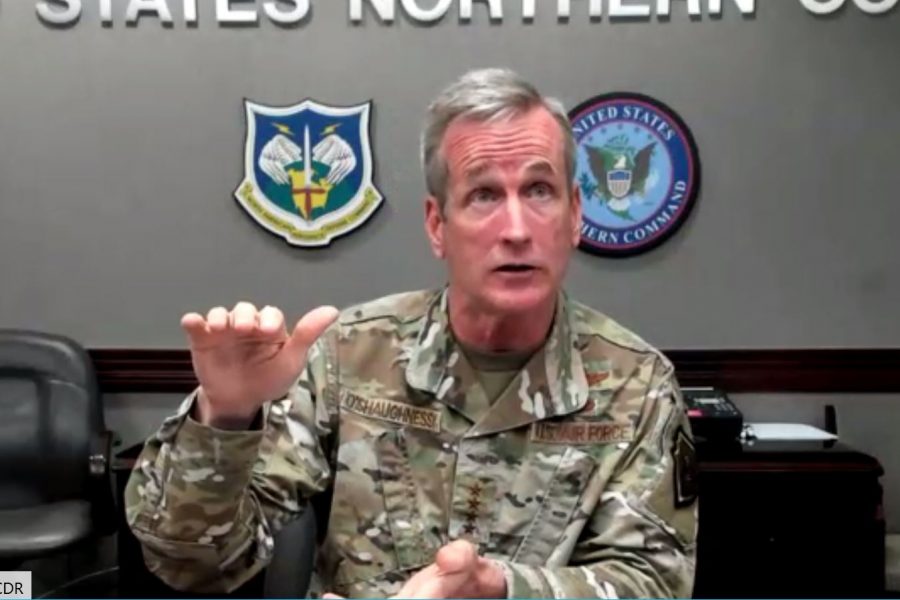The Arctic is becoming a frontline for America’s homeland defense, but the U.S. military needs to train more and improve its ability to communicate in the region, the head of U.S. Northern Command said.
In every other area of the world, U.S. military units can deploy relatively easily and begin operating. However, the Arctic provides unique challenges and if the units aren’t prepared, “they’re not going to be successful,” NORTHCOM boss USAF Gen. Terrence O’Shaughnessy said during a May 4 Mitchell Institute for Aerospace Studies virtual event.
“We have to find a way to get the team out there, exercising and practicing,” in the Arctic, he said.
The Air Force is modernizing the Joint Pacific Alaska Range Complex, which includes a massive 65,000 square miles of airspace, investing in capabilities such as improved threat emitters to represent a more realistic environment in which pilots can train.
Russia has been building and improving its infrastructure in the Arctic, and the U.S. needs to follow suit. For example, the Air Force is increasing its fifth-generation fighter presence in Alaska with the first F-35s arriving at Eielson Air Force Base in late April. Other capabilities, such as new Coast Guard icebreakers “are relevant things for us to be able to operate in the Arctic, … [and are] key to our ability to defend ourselves,” he said.
Improved situational awareness capabilities in the region, such as long-range radars, surveillance aircraft, and space-based resources are needed to mesh together so NORTHCOM can “continue to see approaches to our homeland, understand what is there, and be able to react to it,” O’Shaughnessy said.
In addition to the presence and training capacity, the military needs to improve its communication infrastructure in the Arctic. Right now, above 65 degrees north latitude, the military’s “traditional means of communication really start breaking down,” O’Shaughnessy said.
At 70 degrees, all except the “most exquisite” communications means are broken down, he added.
The ongoing proliferation of military communications capability in low-Earth orbit will help address this issue “in the relatively near future,” O’Shaughnessy said, adding that it is “critical as we move forward.”
